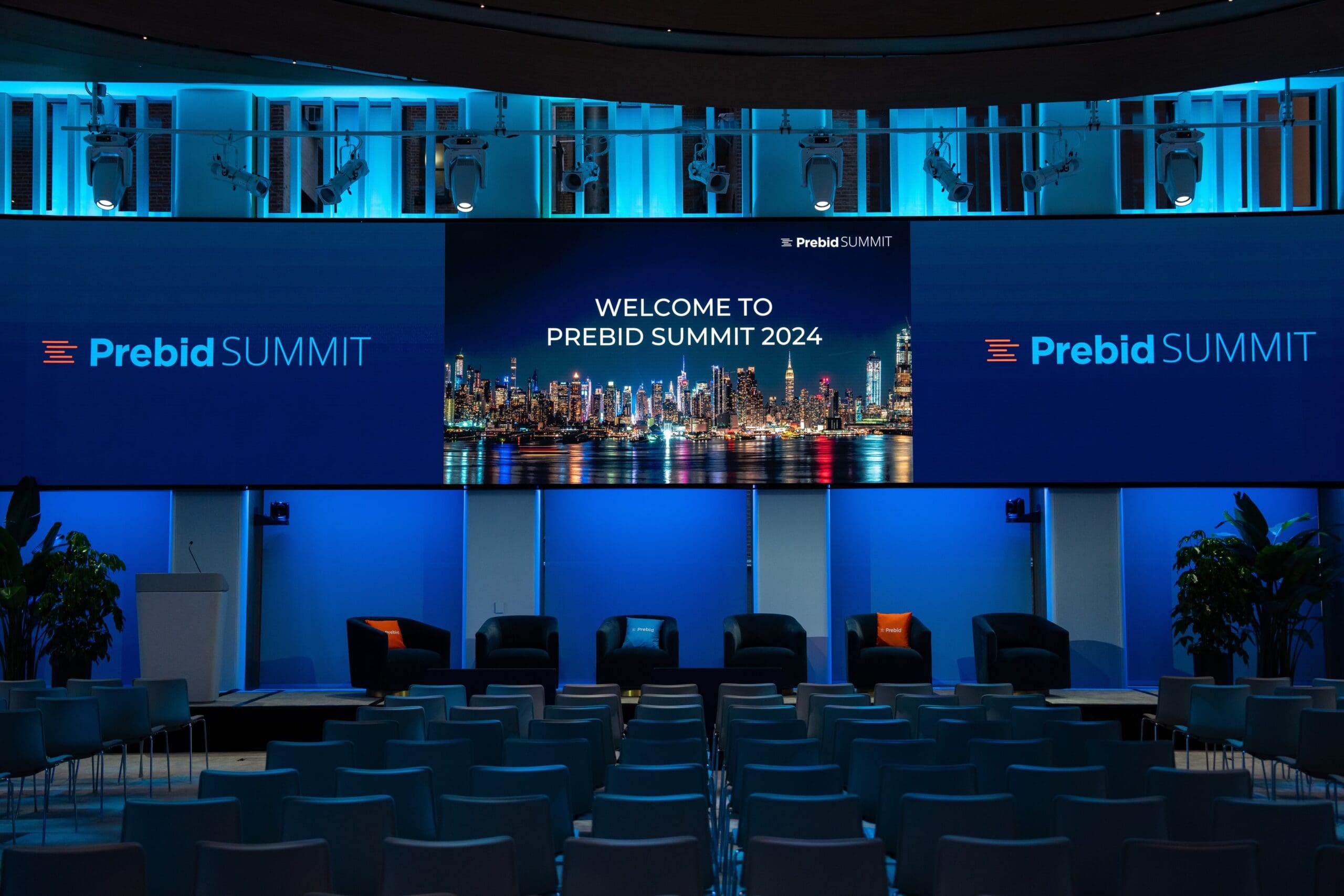As Google Shelves Cookies, How Will the Industry Adjust?
For the past twenty years, we have lived in a world where the tracking of online users’ information is standard practice. This data, predominantly collected through third-party cookies, has provided invaluable marketing insights to publishers. Third-party cookies have also been the backbone supporting many features of programmatic advertising.
So, the news that Google plans to sunset third-party cookies from Chrome within two years and remove cross-site tracking capabilities has raised concerns amongst advertisers, publishers, and consumers alike.
The loss of third-party cookies could result in fewer targeted, personalized ads, meaning a potentially high revenue loss for publishers. Consumers who respond positively to a personalized web experience may see far fewer targeted ads in their social feeds. At least, that’s the worst-case scenario. What’s more likely is that both groups will find viable alternatives, and potentially, better ways to connect.
How Will Small-Medium Publishers Adjust?
Publishers are considered the most vulnerable players when it comes to third-party cookie deprecation. Billions of dollars worth of digital advertising revenue are riding on the industry’s ability to analyze what a third-party cookieless reality will require. Half of the small publishers surveyed in early 2021 plan to rely more on non-advertising sources of revenue when third-party cookies are phased out at the end of the year.
Will small to medium publishers need to adjust and create new ways to survive without third-party cookies? Or do they already have the solutions available to them in first-party cookies data?

First-Party Cookie Data
When a web user visits a website, the web browser stores a small piece of data on the user’s computer. This small piece of data is a cookie. When a user visits your website, your website will store a first-party cookie. Third-party websites store third-party cookies.
First-party cookies allow you, as the site owner or publisher, to gather anonymous data, target your users with personalized ads, and gather important performance data that serve as valuable assets in programmatic advertising.
This first-party cookie is often used to enhance user experience as it remembers preferences such as passwords and other basic data about your visitors. With a first-party cookie, you can gain some user analytics to input into your programmatic marketing strategy. Some of the data you can collect about the user includes:
- What a user did while visiting your website
- How often they visit it
- How long they spend on your website
- What ads they click on
- How long they view those ads
However, without Google cookies, you won’t be able to see data about your visitor’s behavior on other websites unless they are affiliated with yours.
Publishers are planning to build or are already expanding their tools for optimizing their first-party data strategies. These include:
- Increasing the number of their authenticated users
- Advancing their behavioral and contextual data collection
- Advancing their insights capabilities
- Exploring data collaborations with brands or advertisers
To optimize their first-party data, some companies have replaced their outdated data-management platforms (DMPs). These new DMPs can identify fleeting visits from readers who arrive from a specific content piece. Even better, they don’t rely on third-party cookies.
Publishers could consider investing in their online communities by encouraging readers to create profiles on their websites. They could also invite content creation participation. Google has confirmed they will continue and even deepen their support of first-party relationships on their platforms. This support will be for partners with direct connections with their customers. First-party data could be the hot new currency.

Publishers Build Strategic Partnerships With Advertisers
If advertisers can’t reach audiences through data from third-party cookies, they may pursue a direct relationship with publishers to connect their ads with audiences. Advertisers will decide where to place ads based on whether your website’s content matches their target audience.
There’s never been a better time to optimize your website and prove your industry authority. You can make several marketing moves, including creating quality content with numerous backlinks and ensuring your website is optimized for mobile devices. Moreover, be creative in offering value to your users in exchange for sign-in, sharing, subscriptions, etc. Of course, not all users will opt-in to share data, but offering them good perceived value in return will be key in convincing.
Header Solutions
In a world without third-party cookies, header bidding will significantly impact publishers as an advanced programmatic advertising technique. Publishers will need to focus on offering ad-space inventory simultaneously to multiple ad exchanges. This will allow several sources to simultaneously bid on the same inventory, increasing publishers’ yield and driving more revenue.
The loss of third-party cookies will force publishers to adopt new methods and test new strategies before the full impact of cookie deprecation can be understood. Publishers will need to ensure that any new solutions comply with data privacy regulation, successfully drive revenue, and are manageable by their teams and their websites. The time for testing is NOW, before the final deprecation, to be prepared and reap the benefits of early moves. Our publisher partners already see CPM improvements of up to 50% through identifiers and contextual targeting.

Solutions From Google
Google also announced that its Federated Learning of Cohorts (FLoC) technology would create an unidentifiable twin audience anonymously aggregating user information to protect users’ privacy. It does this by processing web browsing behavior on individuals’ devices using machine learning algorithms. While this process is similar to how many data providers use third-party cookies, marketers will not have visibility to the data sources used to build the audiences.
Google also announced that with its FLoC technology, advertisers would only see a slight drop—at most 5%—in conversions per dollar they spend compared with third-party cookie-based advertising. While this is encouraging for advertisers looking ahead to a third-party cookieless reality, concerns remain about how FLoC and other solutions will change the targeting and measurement of programmatic advertising. Naturally, these solutions work well within the Google environment, but publishers must look for alternate solutions that work outside the walled gardens.
How Will This Change Affect Consumers?
Among web users and governments alike, there has been a steadily growing awareness of online privacy issues. The EU enacted the General Data Protection Regulation (GDPR) in 2018 as the world’s most robust set of data protection rules. California rolled out California Consumer Protection Act (CCPA) in 2020, and many states and nations are following suit. These rules regulate how people can access users’ personal information and limit what organizations can do with that data.
Increased User Privacy
When Google announced their third-party cookie phase-out, they also announced their project Privacy Sandbox’s plan to strengthen users’ privacy while using Chrome. The most significant part of their proposal is planning, storing, and processing all user data through the Chrome browser. This plan means that data stays on the user’s device and is privacy compliant.
Once third-party cookies are gone, the online landscape will present additional opportunities for increased consumer privacy.
A Different User Experience
For some users, third-party cookies have improved their user experience. Both first- and third-party cookies enable a personalized user experience that involves relevant and engaging content. In addition, cookies allow your revisit to a website to be more convenient—you don’t have to reset the language, your shopping cart is there, and your preferences are still in tack.
Outsourcing Solutions
Outsourcing your programmatic advertising is an excellent way to allow experts to optimize your ad space in preparation for the demise of third-party cookies. Some programmatic ad companies are perfectly positioned to provide you with a universal ID solution that enables privacy-compliant user identification to effectively power data-driven advertising.
Many publishers don’t realize that they may be using a header bidding type that isn’t optimizing their resources or serving their needs. However, several choices are available, and utilizing the correct header solution will improve your revenue and limit your internal costs and free up resources. For expert guidance on how to maneuver in this new space, contact Adapex today. As a one-stop shop for all your monetization needs, we help our publisher partners maximize revenue.













